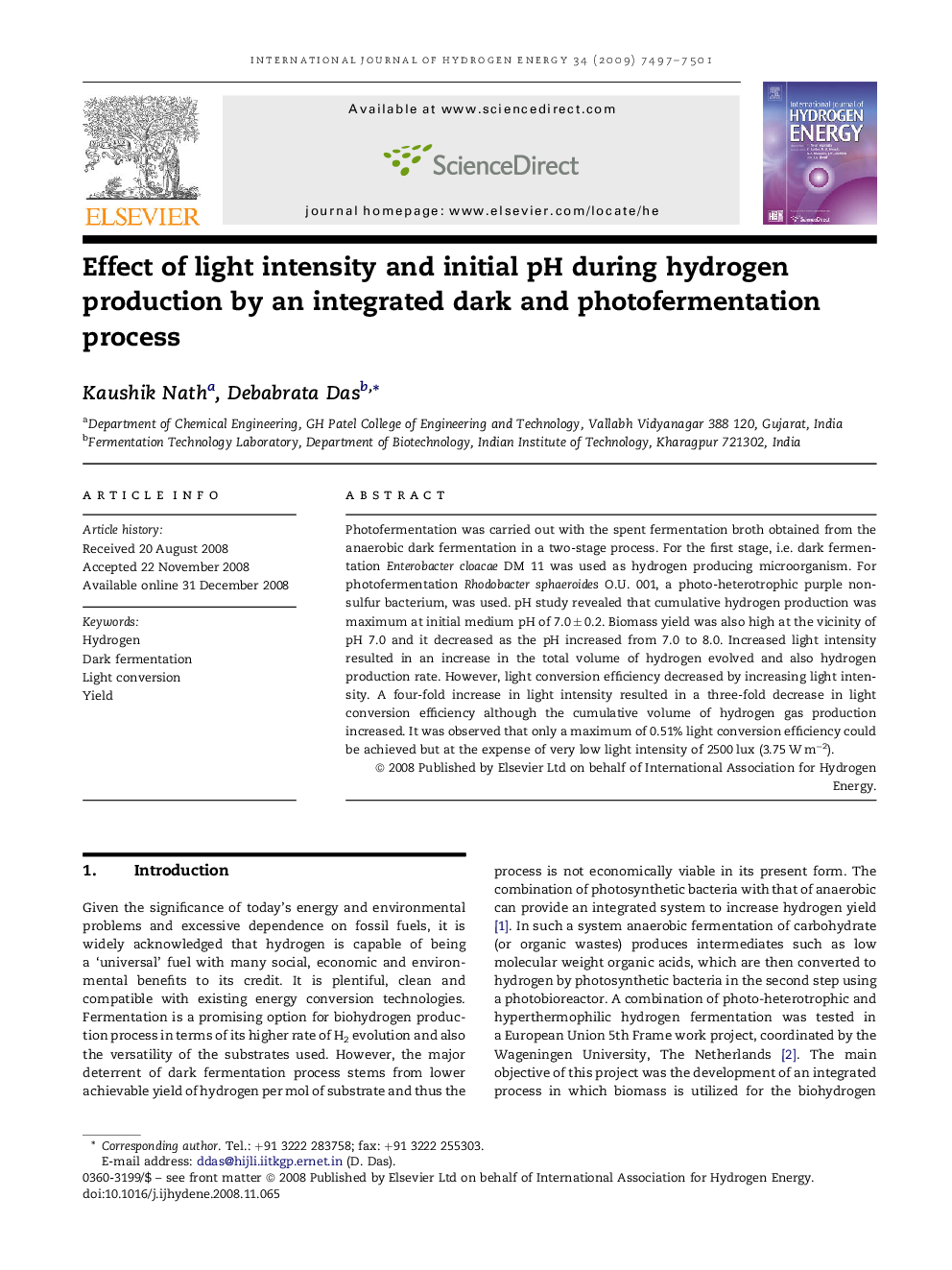| Article ID | Journal | Published Year | Pages | File Type |
|---|---|---|---|---|
| 1281140 | International Journal of Hydrogen Energy | 2009 | 5 Pages |
Photofermentation was carried out with the spent fermentation broth obtained from the anaerobic dark fermentation in a two-stage process. For the first stage, i.e. dark fermentation Enterobacter cloacae DM 11 was used as hydrogen producing microorganism. For photofermentation Rhodobacter sphaeroides O.U. 001, a photo-heterotrophic purple non-sulfur bacterium, was used. pH study revealed that cumulative hydrogen production was maximum at initial medium pH of 7.0 ± 0.2. Biomass yield was also high at the vicinity of pH 7.0 and it decreased as the pH increased from 7.0 to 8.0. Increased light intensity resulted in an increase in the total volume of hydrogen evolved and also hydrogen production rate. However, light conversion efficiency decreased by increasing light intensity. A four-fold increase in light intensity resulted in a three-fold decrease in light conversion efficiency although the cumulative volume of hydrogen gas production increased. It was observed that only a maximum of 0.51% light conversion efficiency could be achieved but at the expense of very low light intensity of 2500 lux (3.75 W m−2).
